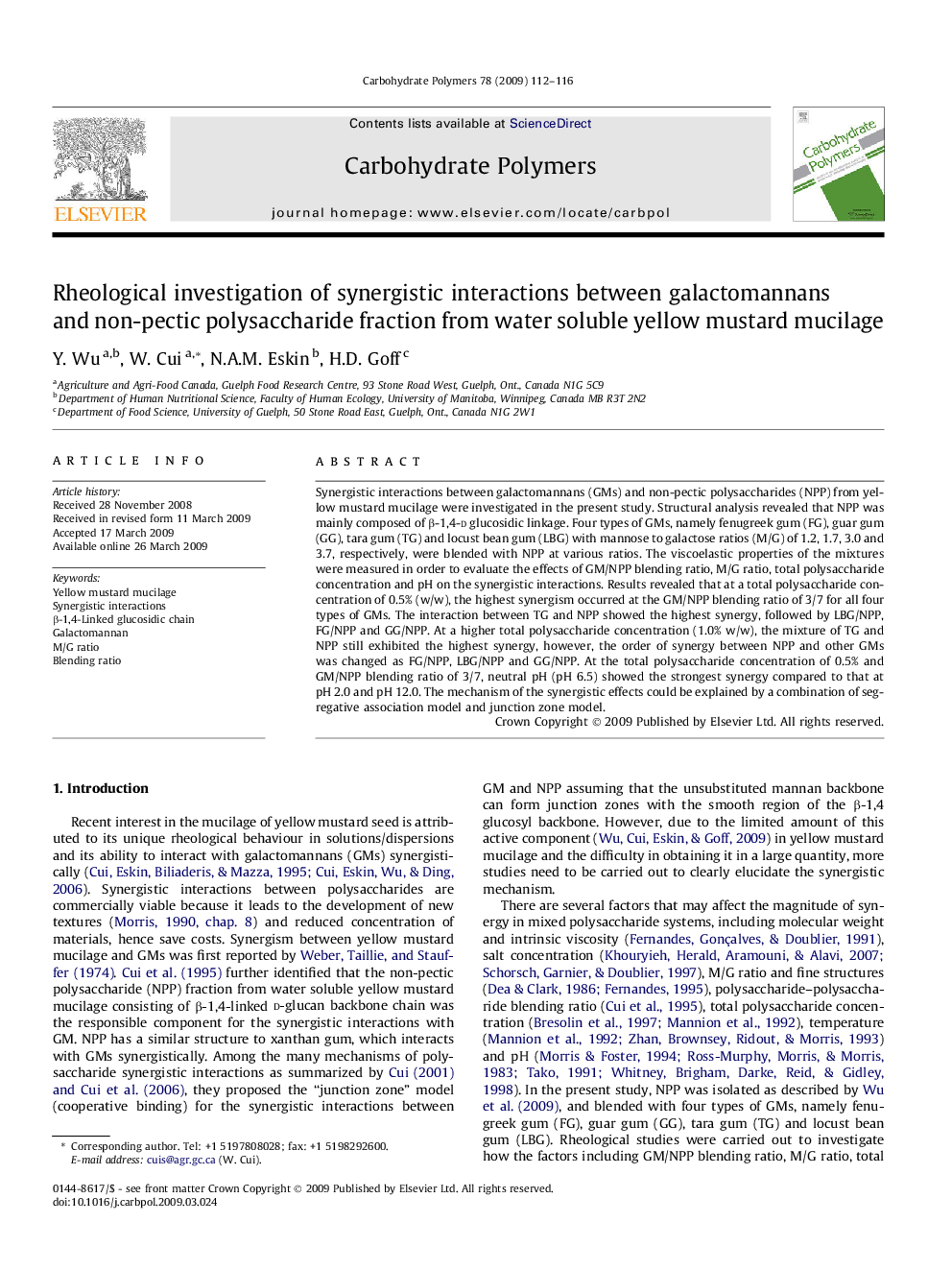| Article ID | Journal | Published Year | Pages | File Type |
|---|---|---|---|---|
| 1384121 | Carbohydrate Polymers | 2009 | 5 Pages |
Synergistic interactions between galactomannans (GMs) and non-pectic polysaccharides (NPP) from yellow mustard mucilage were investigated in the present study. Structural analysis revealed that NPP was mainly composed of β-1,4-d glucosidic linkage. Four types of GMs, namely fenugreek gum (FG), guar gum (GG), tara gum (TG) and locust bean gum (LBG) with mannose to galactose ratios (M/G) of 1.2, 1.7, 3.0 and 3.7, respectively, were blended with NPP at various ratios. The viscoelastic properties of the mixtures were measured in order to evaluate the effects of GM/NPP blending ratio, M/G ratio, total polysaccharide concentration and pH on the synergistic interactions. Results revealed that at a total polysaccharide concentration of 0.5% (w/w), the highest synergism occurred at the GM/NPP blending ratio of 3/7 for all four types of GMs. The interaction between TG and NPP showed the highest synergy, followed by LBG/NPP, FG/NPP and GG/NPP. At a higher total polysaccharide concentration (1.0% w/w), the mixture of TG and NPP still exhibited the highest synergy, however, the order of synergy between NPP and other GMs was changed as FG/NPP, LBG/NPP and GG/NPP. At the total polysaccharide concentration of 0.5% and GM/NPP blending ratio of 3/7, neutral pH (pH 6.5) showed the strongest synergy compared to that at pH 2.0 and pH 12.0. The mechanism of the synergistic effects could be explained by a combination of segregative association model and junction zone model.
